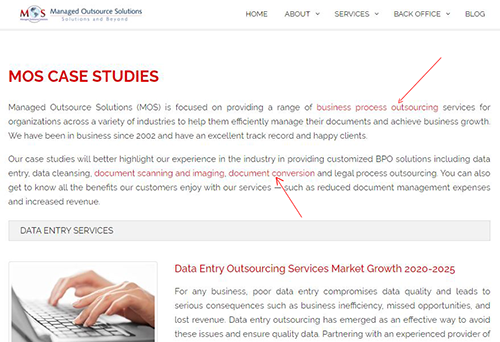An internal link connects one page of a website to another on the same website. Internal links provide clear paths for spiders, prolonged sessions for users, and a tight-knit network of pages and posts. According to Google Search Advocate John Mueller, internal linking is “supercritical for SEO.” He says they are one of the most relevant things that help Googlebots and users to recognize the importance of pages within a website.
An effective internal linking strategy can help you achieve top rankings on search engines and significantly boost your SEO. It signals to Google how your website is structured, creating a hierarchy that prioritizes the most relevant pages. Internal links are crucial for connecting one page of your site to another, making it easier for users to navigate and find the content they need. Expert support can go a long way in achieving success. With a good understanding of a website’s architecture and hierarchy, an experienced search engine optimization company can improve website navigation, reduce bounce rates, and increase page views.
Different Types of Internal Links
Strategic internal linking is an SEO power technique, especially for content marketing. There are different types of internal links such as navigator, footer, and contextual links. Navigator links appear on the header menu with proper HTML formatting and footer links or boilerplate links appear on every page of a website. At the same time, contextual links help to get better internal links pointing to related articles and topics.
- Navigator links: These appear on the header menu with proper HTML formatting. For example, the About Us page or a landing page with a call-to-action.
- Footer links: Also known as boilerplate links, these appear on every page of a website.
- Contextual links: These help to get better internal links pointing to related articles and topics.
How Many Internal Links Should a Page Have?
The maximum number of links for your websites or pages on your websites that bring back your content should be around 20. Like every other factor that determines the performance of your site, this number can slightly decrease or increase according to the size of your site.
Common Issues with Internal Links
- Broken internal links, which hinder the communication of authority
- Links that can’t be crawled due to incorrect URL formats
- Orphaned sitemap pages that can’t be accessed or indexed
- Pages with only a single internal link, missing SEO opportunities
- Permanent redirects, which may reduce the crawl budget
Top 10 Ways to Build Effective Internal Links for SEO
- Add lots of content: You need to write more quality content to add links on your pages. If your content is not good enough, you cannot add more links to redirect the readers to other pages on your website. When you have lots of content, it improves your linkable content, which is a good internal linking strategy for SEO.
- You can use anchor text: Anchor text takes you to another page of the website. It gives an idea to the search engine and your users about the content you are linking. Relevant anchor text helps your page attain top ranks on search engines.
- Use deep links: Rather than redirecting to the Home page or About Us page, deep links direct to pages with specific content. It improves the reader’s experience by giving more relevant content.
- Add links that are relevant and natural: As SEO internal linking strategy requires a user-friendly approach, it is important to add links that are relevant and natural. This promotes user engagement and persuades the visitors to stay longer on your site.
- Links must be contextual: The links must have some connection with the main content. It needs to include content that readers find useful. You cannot add links talking about something that has no connection with the main topic.
- Add a limited number of internal links: There is no need to stuff your internal content with too many links. As per the direction of Google, you just need to add a reasonable number of internal links. According to the length of your content, you can add three or a maximum of four links.
- You can use follow links: Giving proper follow links can help you to boost your SEO ranking. It is a critical factor that is responsible for the overall performance of your page.
- Put links on the top: Even though you can add links anywhere in your content, it is always good if you can add them at the beginning of your web page. It helps readers find related information on your webpage that retains their attention for a long time.
- Avoid internal link automation: Automation creates exact same anchor texts for multiple pages and due to this your webpage might get listed as spam.
- Check and correct broken internal links: you can use a broken link checker like Screaming Frog to check whether there are broken internal links that can badly affect your webpage. This helps find bugs on your website.
Implementing an effective internal linking strategy is crucial for enhancing website navigation, improving SEO rankings, and keeping visitors engaged. By optimizing internal links, businesses can structure their websites efficiently and boost visibility. You can improve the visibility, authority, and user experience of your website by putting into practice efficient linking strategies that focus both internal and external links. Organic search engine optimization services can further refine your internal linking approach, ensuring a seamless user experience while maximizing search engine performance.








